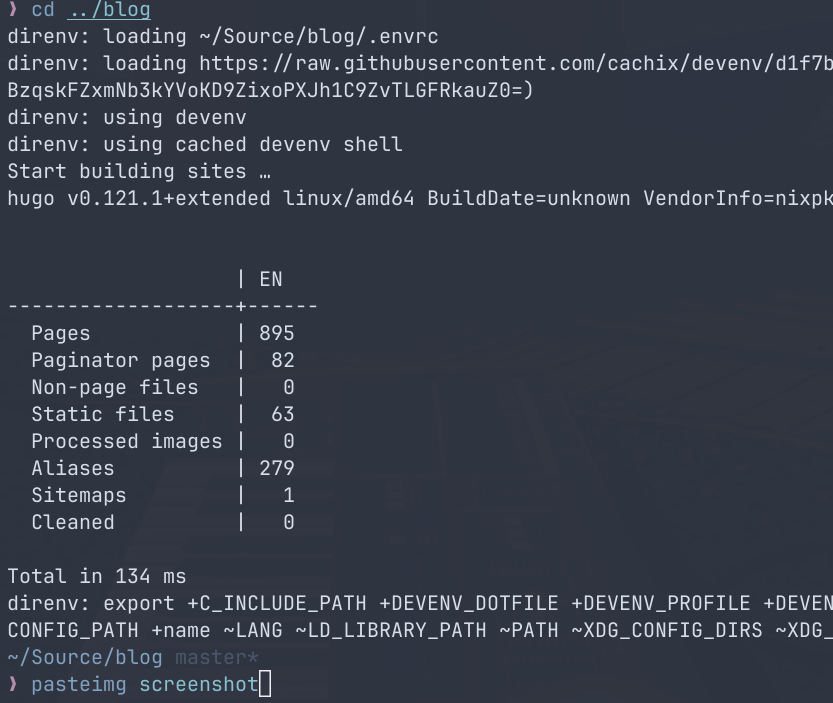I am using the Hugo static site generator to generate this blog. I am also using devenv to manage my development environments. This also includes the blog. This ensures I can easily build and run the blog locally, and keep up to date with the latest Hugo version, without having to install anything on my host system. Devenv also provides easy integration with pre-commit to allow linting of the markdown files, and CI integration with GitHub Actions.
pre-commit.hooks = {
actionlint.enable = true;
markdownlint.enable = true;
};
Devenv activates the environment when I enter the directory, and deactivates it when I leave it. through the use of
direnv.This ensures I have the
correct version of Hugo available when I am working on the blog.
Devenv is also convenient for managing small shell scripts. I have a mkpost script that creates a new post for me:
mkpost.exec = ''
POST=content/post/$(date +%Y-%m-%d)-$1.md
hugo new $POST
nvim $POST
git add $POST
git commit -m"feat: Add $POST"
'';
as well as a simple script to add a image from my clipboard to the blog:
pasteimg.exec = ''
FILE=static/images/$(date +%Y-%m-%d)-$1.png
if [ -x "$(command -v pngpaste)" ]; then
pngpaste $FILE
echo "<img src=\"/images/$(basename $FILE)\" width=700/>" | pbcopy
else
xclip -selection clipboard -t image/png -o > $FILE
echo "<img src=\"/images/$(basename $FILE)\" width=700/>" | xclip -selection clipboard
fi
'';
This is super convenient for adding screenshots to the blog, and keeps those screenshots in my environment only while I’m working on the blog.

If you’re interested in using devenv, check out the getting started guide, and my devenv configuration for using it with hugo.